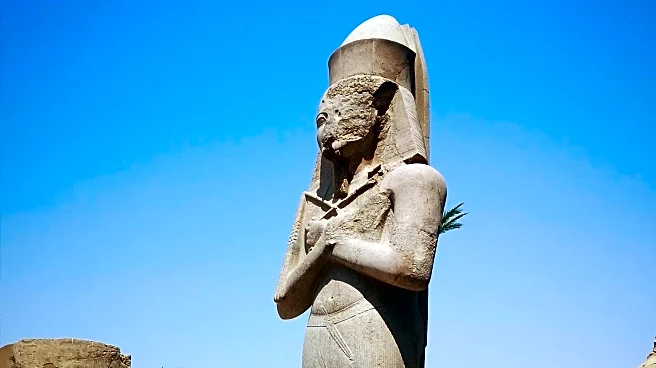What's Happening?
A rare statue of the Egyptian god Pataikos has been discovered in a tomb in the ancient city of Perre, Turkey, marking the first such find in Anatolia. The tomb, known as the 'Stairway to Eternity,' dates back over 2,100 years and reflects the cultural synthesis of the Commagene Kingdom. The statue, a protective dwarf god from Egyptian mythology, was used to ward off evil and guide the deceased through the afterlife. This discovery highlights the cultural exchanges between Egypt and the Hellenistic world, offering insights into the cosmopolitan nature of ancient Commagene. The tomb's architecture and contents, including beads and amulets, demonstrate the integration of local Anatolian practices with foreign symbols.
Why It's Important?
The discovery of the Pataikos statue underscores the historical significance of cultural exchange in ancient civilizations. It provides tangible evidence of the influence of Egyptian religious symbols in Anatolia, suggesting a broader tradition of cross-cultural dialogue during the Hellenistic period. This find enriches our understanding of the Commagene Kingdom's role as a cultural crossroads, where diverse traditions converged. It also highlights the fluidity of ancient religious beliefs and the importance of incorporating foreign elements into local practices, reflecting the interconnectedness of ancient societies.
Beyond the Headlines
The presence of Egyptian artifacts in Commagene's tombs reveals the region's complex views on the afterlife and the integration of foreign elements into local customs. This discovery may lead to further exploration of how ancient civilizations blended religious practices to ensure protection in the afterlife. It also emphasizes the significance of Commagene's cosmopolitan identity, where different civilizations converged to create a unique cultural landscape.













